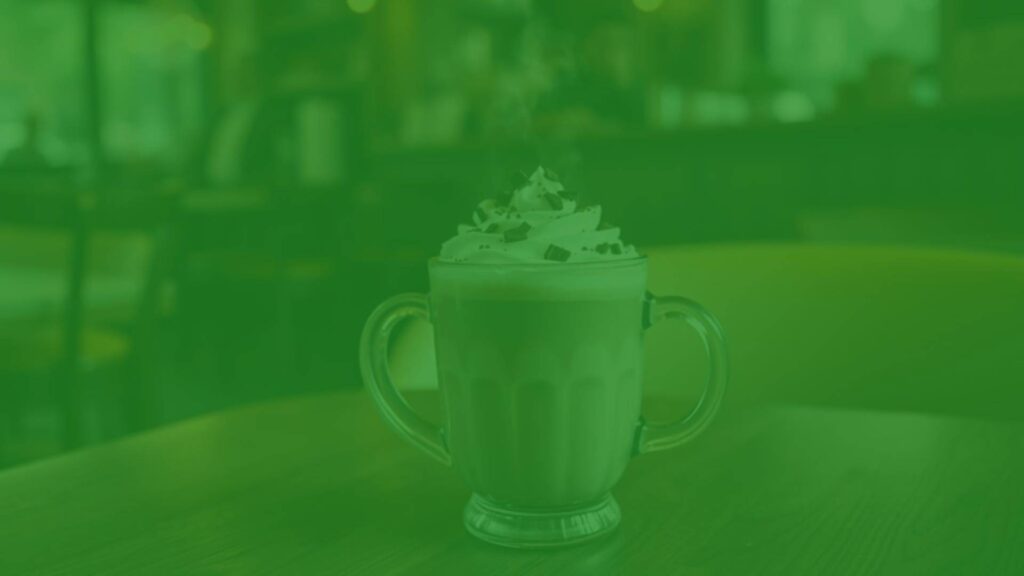Introducing the Chocolate Latte
The chocolate latte is a delicious and comforting beverage that harmoniously blends the bold character of Italian espresso with the smoothness of steamed milk and rich, velvety chocolate. Straddling the line between classic coffee drinks and indulgent desserts, the chocolate latte has become a beloved favorite in both Italian-inspired cafes and around the globe. This drink appeals to those who appreciate the robust flavors of coffee enhanced by the sweetness and depth of cocoa.
Distinctive Qualities and Appealing Characteristics
What sets the chocolate latte apart is its perfect balance between strong espresso and luxurious chocolate flavor. Unlike the classic Italian caffè latte, which pairs espresso with only steamed milk, the chocolate latte introduces high-quality chocolate—often in the form of syrup or finely grated dark chocolate—creating a beverage that is both creamy and gently sweet, with an undercurrent of espresso bitterness that complements rather than overwhelms. The drink typically features a light layer of milk foam, resulting in a velvety mouthfeel and an indulgent, aromatic finish.
Key Ingredients
The essential elements of a traditional chocolate latte are:
- Espresso: The backbone of the drink, providing its distinctive coffee notes.
- Steamed Milk: Adds creaminess and mellows the intensity of the espresso and chocolate.
- Chocolate: Usually a rich chocolate syrup, cocoa powder, or melted dark chocolate delivers the chocolatey component.
- Milk Foam: Lightly aerated milk gives the latte its signature light top layer.
Preparation and Serving Traditions
In crafting a chocolate latte, a shot of freshly-brewed espresso is first poured into a cup. Chocolate (in syrup or melted form) is then added and gently stirred to combine. Steamed milk follows, blending with the chocolate-coffee base, and the drink is finished with a thin cap of milk foam. A dusting of cocoa powder or chocolate shavings often crowns the beverage before it is served, enhancing its aroma and visual appeal. Chocolate lattes are typically enjoyed in wide, ceramic cups which help showcase their layered texture and rich color.
A Brief Historical Perspective
The chocolate latte is a relatively modern invention, inspired by the international popularity of both the caffè latte and European hot chocolate. While not strictly traditional within Italian coffee culture, the drink evolved as baristas sought to merge two beloved flavors—coffee and chocolate—into a single, comforting experience. This fusion has strong roots in Italy’s historic love for fine chocolate, particularly in regions such as Turin, which is renowned for its chocolate tradition. The chocolate latte can be viewed as a contemporary extension of classics like cioccolata calda, combining the elegance of Italian espresso with the decadence of drinking chocolate.
Varieties and Ingredient Swaps
The chocolate latte is easily adapted to suit a wide array of tastes. Some common variations include:
- White Chocolate Latte: Replacing traditional dark chocolate with white chocolate for a sweeter, creamier result.
- Mocha: In some regions, the chocolate latte is often called a “mocha,” although a traditional mocha may incorporate whipped cream or other garnishes.
- Vegan & Dairy-Free Versions: Plant-based milks like almond, soy, or oat can be substituted for regular milk, and vegan chocolate syrups can be used for a dairy-free alternative.
- Spiced Variants: Additions such as cinnamon, chili, or orange zest can lend a new dimension to the classic flavor profile.
Optimal Pairings and Enjoyment
The chocolate latte’s versatility makes it a delightful pairing with a variety of sweet and savory foods. Traditional Italian pastries such as cornetti (Italian croissants), biscotti, or delicate petit fours complement the drink beautifully, as do chocolate-based desserts for an intensely indulgent treat. At brunch, a chocolate latte stands out as an inviting centerpiece or a satisfying finish to a meal.
Frequently Asked Questions
- Is a chocolate latte the same as a mocha? While often used interchangeably, a mocha traditionally includes chocolate and sometimes whipped cream, while a chocolate latte emphasizes the marriage of espresso, chocolate, and milk without excessive embellishments.
- Can I use regular coffee instead of espresso? For an authentic texture and flavor, espresso is preferred, but strong brewed coffee may be substituted in a pinch, though the flavor will be subtler.
- Is the chocolate latte considered a dessert or a coffee drink? With its blend of comforting flavors, the chocolate latte can be both—a satisfying drink for any time of day or a sweet conclusion to a meal.
Conclusion
The chocolate latte embodies the perfect union of Italian espresso craftsmanship and the irresistible allure of chocolate. Its endless versatility, accessible preparation, and broad appeal have secured its place as a go-to drink for coffee aficionados and chocolate lovers alike—an indulgent pause in any day, Italian-inspired or otherwise.

